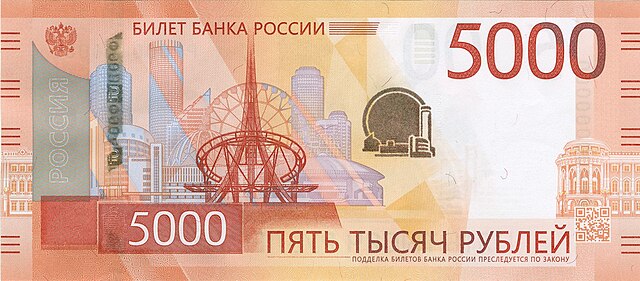Ruble
Currency of Russia and other countries in Eastern Europe From Wikipedia, the free encyclopedia
Currency of Russia and other countries in Eastern Europe From Wikipedia, the free encyclopedia
The ruble or rouble (/ˈruːbəl/; Russian: рубль, IPA: [rublʲ]) is the currency unit of Russia and Belarus. Historically, it was the name of the currency of the Russian Empire (the Imperial ruble) and, later, of the Soviet Union (the Soviet ruble).


As of 2022[update], currencies named ruble in circulation include the Belarusian ruble (BYN, Rbl) in Belarus and the Russian ruble (RUB, ₽) in Russia. Additionally, the Transnistrian ruble is used in Transnistria, an unrecognized breakaway province of Moldova. These currencies are subdivided into one hundred kopeks. No kopek is currently formally subdivided, although denga (½ kopek) and polushka (½ denga, thus ¼ kopek) were minted until the 19th century.
Historically, the grivna, ruble and denga were used in Russia as measurements of weight. In 1704, as a result of monetary reforms by Peter the Great, the ruble became the first decimal currency. The silver ruble was used until 1897 and the gold ruble was used until 1917. The Soviet ruble officially replaced the imperial ruble in 1922 and continued to be used until 1993, when it was formally replaced with the Russian ruble in the Russian Federation and by other currencies in other post-Soviet states.
In the past, several other countries influenced by Russia and the Soviet Union had currency units that were also named ruble, including the Armenian ruble, Latvian ruble and Tajikistani ruble.
Seamless Wikipedia browsing. On steroids.
Every time you click a link to Wikipedia, Wiktionary or Wikiquote in your browser's search results, it will show the modern Wikiwand interface.
Wikiwand extension is a five stars, simple, with minimum permission required to keep your browsing private, safe and transparent.